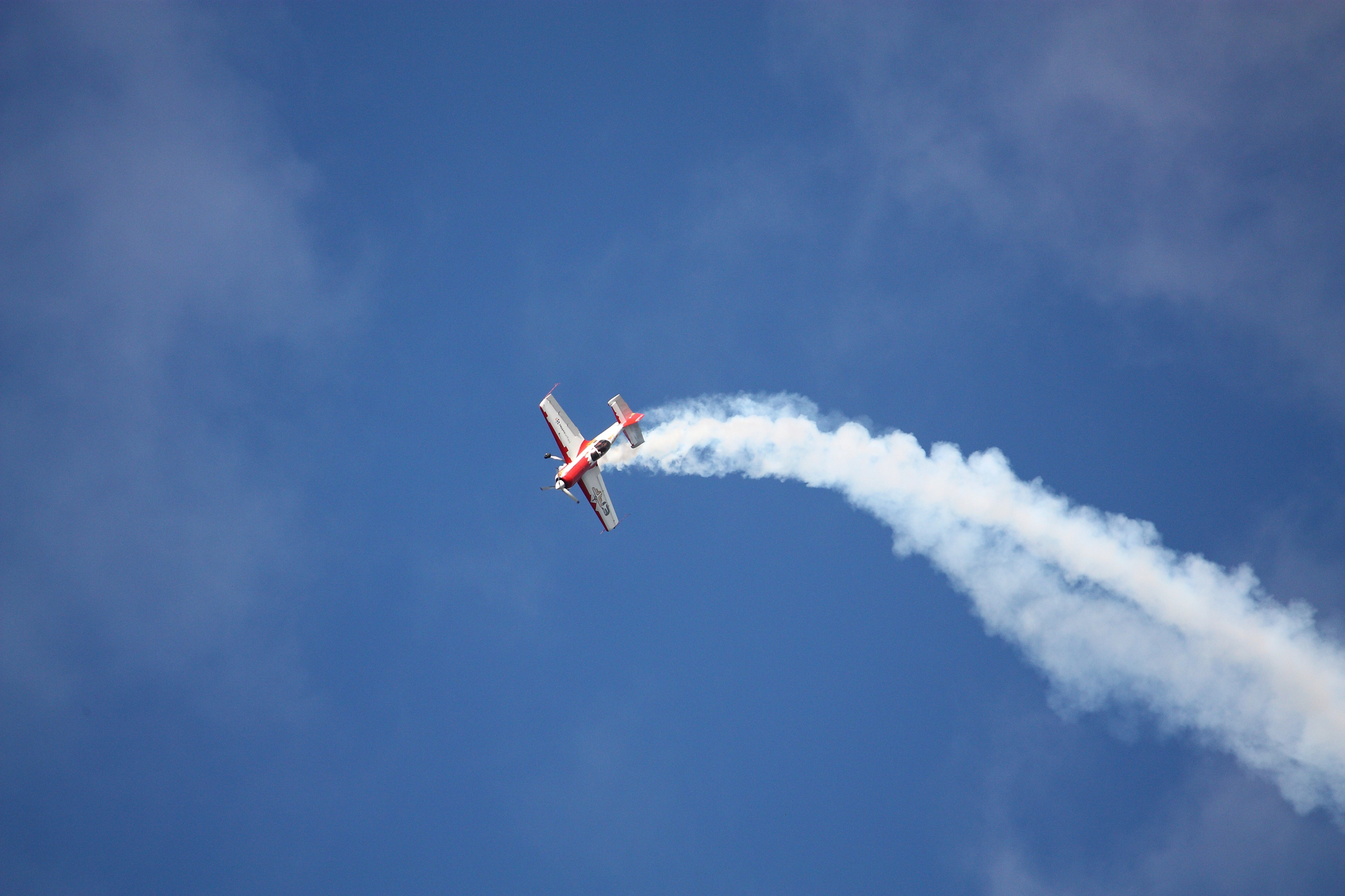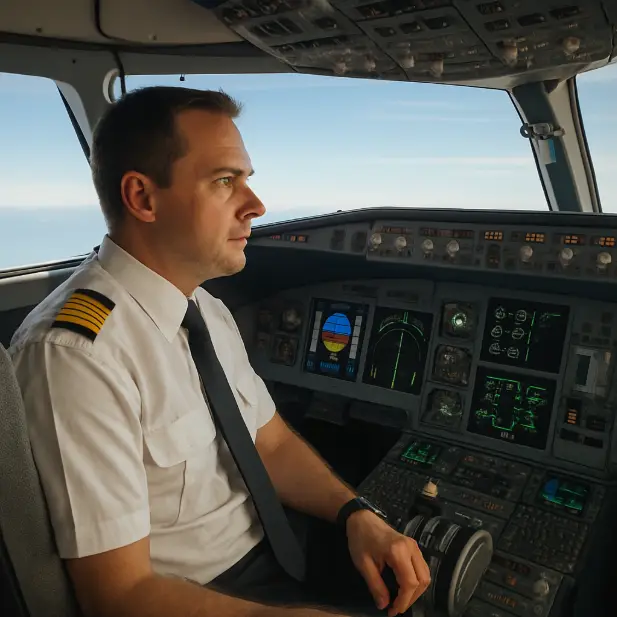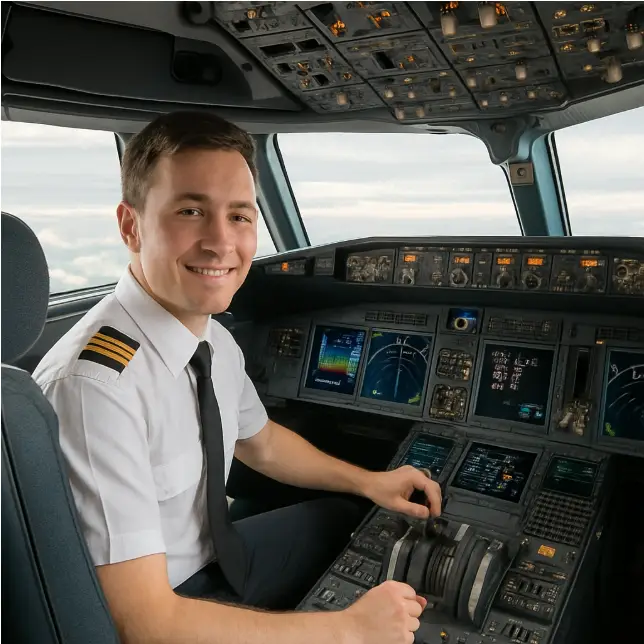How to Recover from Flat Spin

- aviatorpro_6714
What is a Flat Spin?
A flat spin is a type of aircraft spin where the airplane rotates around its vertical axis, with the nose of the aircraft either level or slightly pitched upward. Unlike a regular spin, where the nose is pointed downwards, a flat spin keeps the aircraft in a more horizontal orientation, making recovery more challenging. This occurs because the aerodynamic forces acting on the aircraft do not naturally promote a downward pitch, which is essential for recovery.
The dynamics of a flat spin can be particularly disorienting for pilots. In this scenario, the aircraft may appear to be floating or suspended in the air, as the usual gravitational pull isn’t aiding the descent. This unique orientation can lead to a rapid loss of altitude if not managed correctly, emphasizing the importance of immediate and accurate pilot response to regain control.
How Does a Plane Enter a Flat Spin?
Several factors can lead to a flat spin. Typically, it begins with an aerodynamic stall, where the wing no longer generates lift due to a high angle of attack. If the aircraft is not properly controlled, it can enter a spin. A flat spin occurs when the aircraft’s center of gravity shifts in such a way that the nose remains level, preventing the natural recovery that happens in a nose-down spin. The center of gravity plays a crucial role because it affects how the aircraft responds to control inputs and external forces.
Environmental factors like turbulent weather conditions or sudden wind shifts can also contribute to the initiation of a flat spin. Pilots must be vigilant during flight, particularly in weather-prone areas, to ensure they maintain control and avoid conditions that could lead to a stall. Additionally, understanding the specific tendencies of the aircraft type being flown is essential, as some aircraft designs are more susceptible to entering a flat spin than others.
What Causes a Flat Spin?
The primary causes of a flat spin include:
- Improper Weight Distribution: An aircraft’s center of gravity is crucial. If the weight distribution shifts too far back, it can lead to a flat spin. Pilots need to ensure that cargo and passengers are properly balanced, as even minor shifts can significantly impact flight stability.
- Pilot Error: Incorrect control inputs during a stall can exacerbate the situation. Misjudgments in handling the aircraft’s controls during a stall can disrupt the delicate balance needed to prevent a spin. Training in stall recognition and recovery is vital to mitigate this risk.
- Mechanical Failures: While rare, issues such as rudder malfunction can contribute to entering a flat spin. Regular maintenance checks are imperative to identify and rectify potential mechanical issues before they can pose a threat during flight. Ensuring that all systems, especially those related to control surfaces, are functioning optimally is a fundamental aspect of pre-flight preparation.
The Differences Between a Flat Spin and a Regular Spin
Flat Spin vs. Spin
In a regular spin, the aircraft’s nose is pointed downward, and the plane rotates around both the vertical and horizontal axes. Recovery is often more straightforward because gravity assists in pulling the nose down, aiding in breaking the stall. In contrast, a flat spin keeps the aircraft level, making it harder to regain control since gravity is not aiding the recovery process. This makes the flat spin more dangerous as it lacks the natural corrective forces that a nose-down spin benefits from.
Understanding the physics behind these spins is crucial for pilots. A regular spin involves a more predictable path and allows for more intuitive recovery procedures. Conversely, the horizontal nature of a flat spin means that the aircraft’s aerodynamic surfaces have less effective airflow, complicating the pilot’s efforts to regain control. This distinction highlights the necessity for specialized training and preparation to handle flat spins effectively.
Spin Flying and Its Challenges
Spin flying, while sometimes used in aerobatics, presents significant challenges. Pilots must be well-trained to handle spins and understand the unique dynamics involved in recovering from them. The flat spin, due to its level orientation, requires specific techniques to exit safely. This form of spin flying demands a higher level of skill and precision, as the usual cues and responses are altered.
The challenges of spin flying are compounded by the psychological pressure on the pilot. In the midst of a spin, maintaining composure and methodically following recovery procedures is vital. Pilots must be trained not only in the mechanical aspects of spin recovery but also in managing the stress and disorientation that can accompany such situations. This comprehensive approach ensures that pilots are equipped to handle spins with confidence and effectiveness.
Techniques for Flat Spin Recovery
Steps to Recover from a Flat Spin
- Reduce Power: Immediately bring the throttle to idle. Power can exacerbate the spin by maintaining or increasing rotation speed. This step is crucial as any thrust can further destabilize the aircraft’s orientation, making recovery efforts more difficult.
- Neutralize Ailerons: Ensure that the ailerons are in a neutral position. Any input can worsen the spin. Aileron inputs can inadvertently tighten the spin, so maintaining neutrality helps prevent the spin from escalating.
- Apply Full Opposite Rudder: This is crucial. Determine the direction of the spin and apply full rudder in the opposite direction to counteract the rotation. The rudder’s role is pivotal in arresting the spin’s momentum, and prompt application can significantly enhance recovery prospects.
- Push Forward on the Elevator: This helps lower the nose and regain airflow over the wings, assisting in breaking the stall. By pushing the elevator forward, pilots can encourage the aircraft to adopt a more nose-down attitude, facilitating recovery.
- Hold the Controls Steady: Once the nose drops and the spin stops, hold the controls steady until the aircraft stabilizes. Sudden or excessive movements can disrupt the recovery process, so steady hands are key.
- Regain Control and Power: Once the spin is halted and the aircraft is descending safely, gradually regain control and apply power to recover normal flight. This final step requires careful monitoring of the aircraft’s systems to ensure a smooth transition back to stable flight.
The Importance of Training
Training is essential for any pilot to manage a flat spin effectively. Simulators and aerobatic training can help pilots experience spin conditions in a controlled environment, making them better prepared for real-life scenarios. Such training allows pilots to practice the recovery techniques repeatedly, building muscle memory and confidence.
Moreover, regular training sessions help keep pilots updated on the latest best practices and technological advancements in spin recovery. As aircraft design and technology evolve, so do the methods for handling spins. Continuous education ensures that pilots are always ready to handle these critical situations with the most effective strategies available.
Can You Recover from a Flat Spin?
The Reality of Recovery
While a flat spin is a serious situation, recovery is possible with the right techniques and training. Pilots must remain calm and follow the established recovery procedures without hesitation. The ability to remain composed under pressure is as important as technical knowledge, as panic can lead to mistakes that worsen the situation.
The reality of recovery also depends on the pilot’s familiarity with the aircraft. Each aircraft type may respond differently to recovery inputs, and understanding these nuances can make the difference between success and failure. This is why personalized training on the specific aircraft one flies is invaluable.
Factors Influencing Recovery Success
Several factors can influence the success of a recovery:
- Altitude: Having sufficient altitude gives pilots more time and space to execute recovery maneuvers. Altitude acts as a safety buffer, allowing pilots to make necessary adjustments without the immediate threat of ground impact.
- Pilot Experience: Experienced pilots are more likely to recognize and respond to a flat spin promptly. Experience not only enhances technical skills but also builds the confidence needed to implement recovery procedures effectively.
- Aircraft Type: Different aircraft have varying characteristics, and some may be more prone to flat spins than others. Understanding these characteristics allows pilots to tailor their response to the specific demands of their aircraft, ensuring a more precise and effective recovery.
Preventing Flat Spins
Steps to Avoid Flat Spins
- Proper Weight Distribution: Always ensure the aircraft’s center of gravity is within the recommended limits. This is fundamental to maintaining stable flight dynamics and preventing unwanted spins.
- Regular Maintenance: Keep the aircraft well-maintained to prevent mechanical failures that could lead to a flat spin. Regular inspections and adherence to maintenance schedules are crucial in identifying potential issues before they become hazards.
- Training and Practice: Regularly practice stall and spin recovery techniques to remain proficient. Ongoing training keeps pilots prepared and confident, ensuring they can handle spins effectively if they occur.
The Role of Pre-flight Checks
Conducting thorough pre-flight checks is vital. Verifying weight distribution, checking control surfaces, and ensuring all systems are operational can significantly reduce the risk of entering a flat spin. Pre-flight checks serve as the first line of defense against potential issues, allowing pilots to address concerns before takeoff.
In addition to mechanical checks, pilots should also assess weather conditions and flight plans for any potential risks. Being proactive in identifying and mitigating risks enhances overall flight safety and reduces the likelihood of encountering a flat spin.
Conclusion
A flat spin is a challenging situation for any pilot, but with the right knowledge and preparation, it is manageable. Understanding what causes a flat spin, how to recover from one, and the importance of training can make all the difference. Safety in the skies comes from being well-informed and ready to act when faced with unexpected scenarios. Always prioritize training, maintain your aircraft, and stay aware of your flight conditions to prevent and recover from a flat spin effectively.
By adhering to these principles, pilots can approach their flights with greater confidence, knowing they are equipped to handle even the most daunting of situations. As aviation continues to evolve, so too must the skills and knowledge of those who take to the skies, ensuring that safety remains the highest priority.



